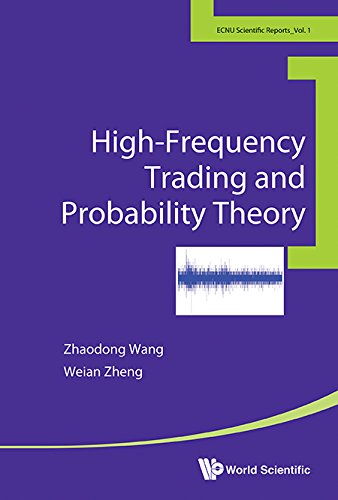In recent years, high-frequency trading (HFT) became an extremely hot topic in capital markets around the world. Normally, HFT has the following attributes: • It is a kind of automatic trading strategy, which means that the trading is done by computer and there is no instance of human decision making during the buying or selling of any instrument. Some HFT systems allow traders to have some influence on it, but they can only change a few parameters of the strategy, and must allow the system to apply these parameters to the strategy making the trades. • The traders keep positions for a very short time. In most cases, only several seconds or minutes. Some people believe that traders should not take any position over night, while others think it is allowed. But most agree that, HFT should not keep the main parts of the position to the second day. • High-frequency traders only trade via electronic trading systems, not over-the-counter (OTC) markets, or any market still using outcries. • It uses a high-speed connection to connect to the market, so as to retrieve high-frequency market data and place orders. In most cases, HFT requires the fastest access methods for a specified market, for example, the securities exchange place.
چکیده فارسی
در سالهای اخیر، معاملات با فرکانس بالا (HFT) به یک موضوع بسیار داغ در بازارهای سرمایه در سراسر جهان تبدیل شده است. به طور معمول، HFT دارای ویژگی های زیر است: • نوعی استراتژی معاملاتی خودکار است، به این معنی که معاملات توسط کامپیوتر انجام می شود و هیچ نمونه ای از تصمیم گیری انسانی در هنگام خرید یا فروش هیچ ابزاری وجود ندارد. برخی از سیستمهای HFT به معاملهگران اجازه میدهند تا روی آن تأثیر بگذارند، اما آنها فقط میتوانند چند پارامتر استراتژی را تغییر دهند و باید به سیستم اجازه دهند تا این پارامترها را در استراتژی ایجاد معاملات اعمال کند. • معامله گران موقعیت های خود را برای مدت بسیار کوتاهی حفظ می کنند. در بیشتر موارد، فقط چند ثانیه یا چند دقیقه. برخی معتقدند معامله گران نباید یک شبه موضعی اتخاذ کنند، در حالی که برخی دیگر آن را مجاز می دانند. اما اکثریت موافق هستند که HFT نباید قسمت های اصلی پوزیشن را تا روز دوم نگه دارد. • معامله گران با فرکانس بالا فقط از طریق سیستم های معاملاتی الکترونیکی معامله می کنند، نه بازارهای خارج از بورس (OTC) یا هر بازاری که هنوز از اعتراض استفاده می کند. • از یک اتصال پرسرعت برای اتصال به بازار استفاده می کند تا داده های بازار با فرکانس بالا را بازیابی کند و سفارش دهد. در بیشتر موارد، HFT به سریع ترین روش های دسترسی برای یک بازار مشخص، به عنوان مثال، محل مبادله اوراق بهادار نیاز دارد.
ادامه ...
بستن ...
Author(s): Zhaodong Wang, Weian Zheng
Series: East China Normal University Scientific Reports
Publisher: World Scientific Publishing Company, Year: 2014
ISBN: 9814616508,9789814616508
ادامه ...
بستن ...










